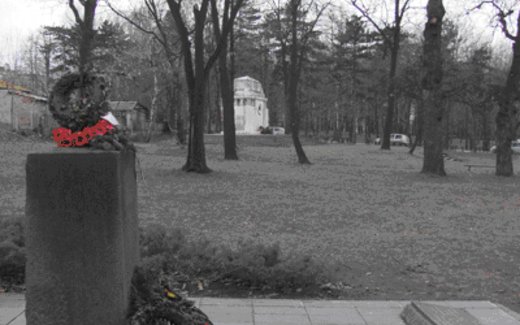Serbia
Belgrad / Beograd
Total Occupation: 944 fatalities
Total Occupation: 944 fatalities
The German war cemetery BANOVO BRDO is located in Kosutnjak Park in the south-west of Belgrade. It was established as a German military cemetery during the First World War and was greatly expanded during the Second World War with extensive additional burials. Following the conclusion of a war cemetery agreement, it is planned to expand this cemetery, which has unfortunately largely fallen into disrepair, into a central cemetery for German war dead in Serbia. The origins of the cemetery in the First World War Following two defeats of the Austro-Hungarian army in August and December 1914 in the campaign against Serbia, a third attempt was made in October 1915 - at the request of Bulgaria, which was won over as a new ally in September 1915 - to defeat Serbia under German supreme command. Field Marshal August von Mackensen (+ November 1945) took over the army group and successfully ended the campaign against Serbia. The main battleground was the heights southwest of Belgrade, which were fiercely defended by the Serbian troops. After the capture of Belgrade, the construction of a "German Heroes' Cemetery" on Banovo Brdo began immediately. As there are no longer any cemetery registers - they are said to have been "dragged to Silesia and lost there" - the number of those buried there can only be estimated. Around 2600 fallen soldiers of the First World War, including 30 Serbian war dead, as well as some British and French gunners, who were later transferred to their own military cemeteries, are said to have found their final resting place here. The design of the cemetery The forest cemetery on Banovoberg was characterized by a horticultural design with preservation of the tree population, structuring of the cemeteries with individual and comrades' graves by slab paths, and especially the unique monument situation created in connection with the construction of the cemetery. Another interesting detail is the so-called "Mackensen bench" erected in honour of Kaiser Wilhelm II during his stay in Belgrade in 1916, a crescent-shaped concrete bench at the edge of the cemetery with a view of the Sava, the border river at the time between the Kingdom of Serbia and the Austrian Empire and Kingdom. The main monument of the complex, which can be reached via a wide staircase, consists of a memorial in the classicist style and crowned by a marble sarcophagus. It bears the inscription "The Prussian Reserve Infantry Regiment 208 to its fallen heroes". A simple stone pyramid with the inscription "To his loyal comrades - the 22nd Reserve Corps" is located at some distance from the main memorial. Between these two structures, a third memorial - in the form of a simple cubic stone with a cross - was erected on the orders of Commander von Mackensen. It bears the inscription in German and Serbian: "Here rest Serbian heroes". Today, visitors can find an explanation of the origin of this special memorial on a granite plaque in front of the memorial stone, which bears the words "Memorial to the Serbian warriors who died heroically defending Belgrade in the fall of 1915" in Serbian. This monument was erected ... as a sign of reverence to the enemies of the war". Expansion of the cemetery during the Second World War During the Second World War, the military cemetery was enlarged by creating new plots twice the size of the old area. From 1941 to 1944, according to the cemetery administrator Eller, who worked there until 1944, the Wehrmacht buried an estimated 2,000 German soldiers on the now 200 x 250 m site. From autumn 1944, the situation changed fundamentally; the cemetery was increasingly dismantled. At the end of 1945, the Yugoslav authorities removed the 30 Serbian war dead from the First World War from a smaller plot in the middle of the German cemetery, which was now no longer suffering, and transferred the remains to the municipal cemetery "Novo Groblje" for reburial in the "Crypt of the Defenders of Belgrade".
Efforts by the Volksbund to preserve the cemetery In the mid-1980s, the Volksbund finally succeeded in drawing the Yugoslav government's attention to the grievances, particularly with regard to the condition of the monuments on the site, which was no longer recognizable as a cemetery, and also managed to get them to listen. In 1988, the memorial to the Prussian Reserve Infantry Regiment 208 was actually restored by the City of Belgrade's Office for the Protection of Monuments. At the same time, bronze plaques for the 947 known German soldiers who died or were taken prisoner of war were placed on the main memorial at the expense of the Volksbund.

